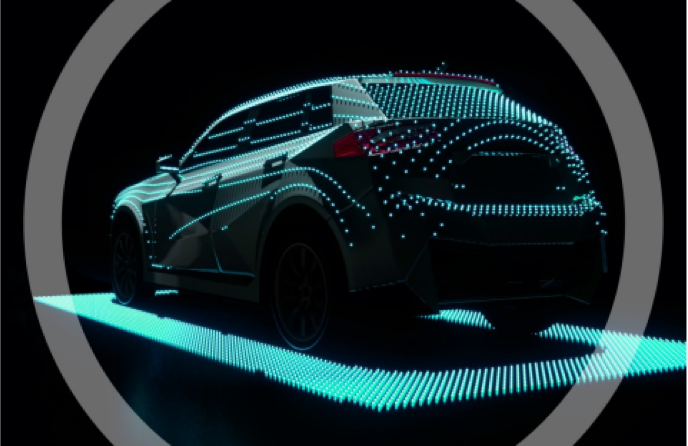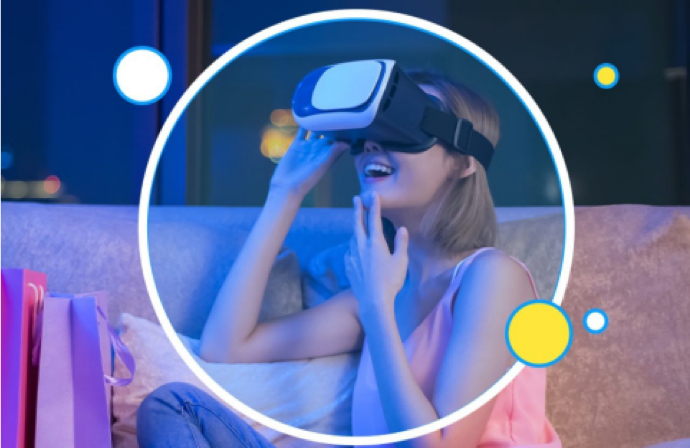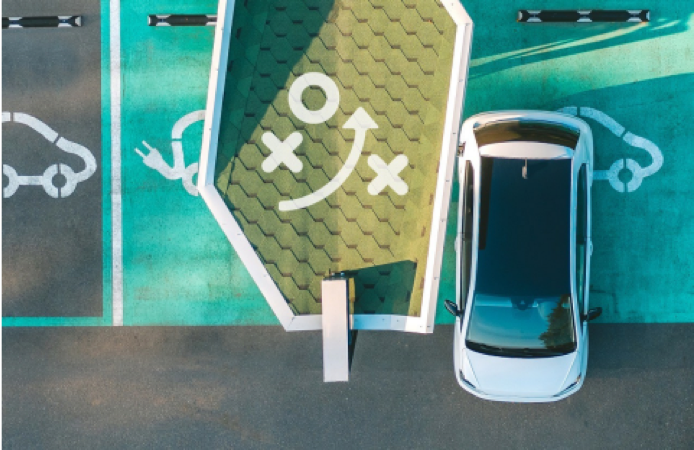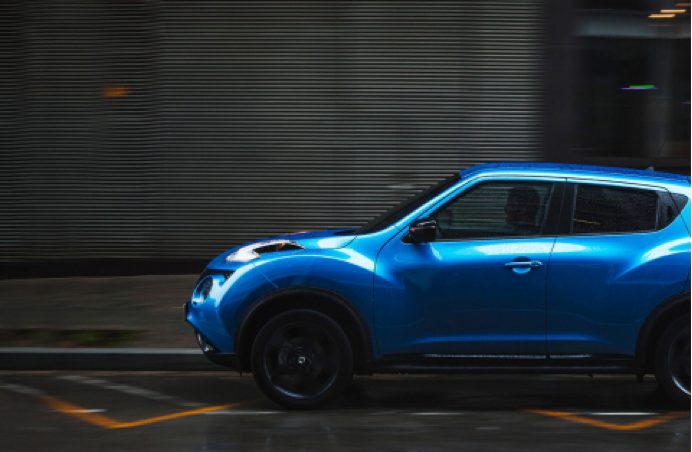What issue can we solve for you?
Type in your prompt above or try one of these suggestions
Suggested Prompt



Transportation & Mobility
The Future of Tech & Automotive: CES 2023 Top Takeaways
Ten years ago, there were no car companies at the Consumer Electronics Show (CES). Today, CES is one of the largest auto and mobility tech shows with some 300 exhibitors showcasing the latest innovations in transportation and mobility.
Here’s a roundup of the top innovations unveiled at CES 2023 that we’re most excited about:

Auto manufacturers take bold steps toward an electric future
Global auto manufacturers—including BMW, Mercedes and GM—are going all in on electric vehicles (EVs). We’re seeing more EVs introduced at different price points to broaden the EV market and make EVs more affordable.
Notable EV announcements this year include: BMW's i Vision Dee, Ram’s Revolution 1500 BEV, Peugeot’s Inception Concept, Volkswagen’s ID.7 and Sony Honda Mobility’s Afeela.
Beyond simply launching more EVs, companies are ensuring that the EV market will grow by addressing factors that can potentially stifle EV sales. In their keynote address, Stellantis announced plans to lower the cost of EV manufacturing and enable lower price points by reducing its factories. Mercedes-Benz announced plans to launch a network of 10,000 high-speed chargers focused on using renewable energy sources that will be open to drivers of any car brand with compatible technology.
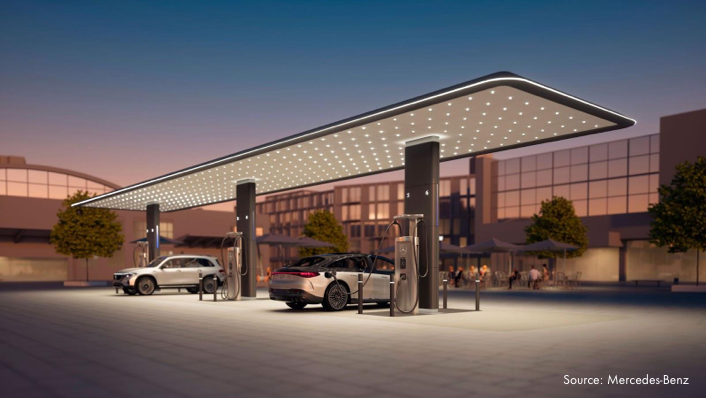

Auto suppliers equip the next generation of connected cars
Automotive suppliers are supplying increasingly sophisticated equipment to power the next generation of connected cars. We’re seeing connected car features evolve beyond vehicle status and safety features to include monitoring vehicle productivity and battery charging. As a result, customers can access a wider range of technology to improve their lives.
Manufacturers such as ChargePoint, Blink and Vestel are integrating intelligent features into their EV charging equipment to help determine how much electricity is captured by the battery. In addition, more features are available for level 2 and 3 charging.
Bosch announced the development of quantum sensors in the future to enable more precise measurements than those of current MEMS sensors.
On the autonomous application side, Qualcomm demoed its Snapdragon Ride platform equipped to support multimodal sensors, including cameras, radars, lidars, AD maps and ultrasonic sensors.
Lidar technology is also becoming more compact over time. Solid-state lidar emitters that fit inside existing camera casings (as opposed to spinning coffee cans) are expected to become available in cars starting model year 2025. This enables autonomous vehicle technology to be used for a variety of commercial and industrial applications.

AI, mixed reality and gaming power in-cabin experiences
We can’t talk about CES without mentioning the in-cabin experience concepts we’re seeing.
General Motors and Microsoft demonstrated a new video game, Dash Runner, that imagines how people might pass the time while their EVs charge or in a future where self-driving cars allow passengers to enjoy other forms of entertainment while on the road.
The Peugeot Inception Concept EV also features unique in-cabin experiences, incorporating AI technology that allows passengers to interact with the vehicle in a more natural way by using inputs like touch, voice, glance and gesture. It also offers AI-based features and services such as navigation, an ecommerce marketplace and payment services. The 2024 Ram 1500 BEV features a Shadow Mode, where the truck autonomously follows the driver as they walk around a job site.
BMW's i Vision Dee concept car features a Mixed Reality Slider that transforms the dashboard and head-up display into an instrument panel with features such as driving and navigation, calls and texting, mixed reality displays and access to a virtual world. The car's AI takes on the characteristics of a "smart" companion, interacting with its environment through an e-ink interface and recommending destinations, entertainment, news, calendar entries and social media posts.
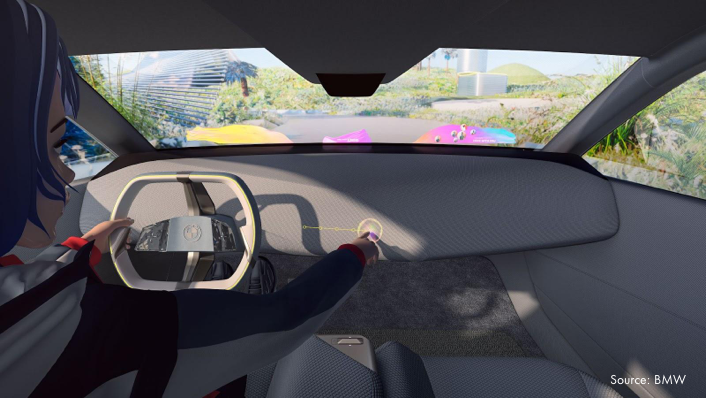
The newest space is the metaverse and while we don't know exactly what the metaverse will look like, major OEMs and retail companies are experimenting with virtual realities and the metaverse.

Sustainability meets the circular economy, micro mobility and fuel cell technology
Sustainability has become critical and what we are seeing is a continued focus on creating sustainability through materials, processes and partnerships.
BMW is aiming to achieve 100% vehicle reuse in a sustainable circular economy model for manufacturing. The 2024 RAM 1500 BEV's interior will use sustainable materials such as flooring made of recycled rubber and cork and leather that is produced by using a byproduct of the apple industry.
Bridgestone is also working on a circular tire economy, from manufacturing and ownership to maintenance and end-of-life material circularity. The company is partnering with local farmers and Native American tribes to source guayule, a domestic, renewable desert shrub used for rubber production.
Finally, e-bike profiles are becoming sleeker, and battery form factors are getting slimmer. We also witnessed one of the more unusual and innovative micro-mobility innovations—a bicycle equipped with a hydrogen fuel cell charged by a hydrogen station.
Publicis Sapient partnered with Microsoft to bring clients into the future at CES 2023. See how PS and MSFT work together.
Work With Us
What’s Next for Your Business? We’re Here to Help You Achieve It.
Start a Conversation
Related Reading
-
![#]()
Insight
How Connected Vehicles’ Data Will Help Car Owners
Find out how people-centric data strategy can generate customer value for automotive organizations.
-
![#]()
Insight
Top Reasons to Build Your Customer Data Platform in the Cloud
In our Future of Utilities Report 2019, we look at where the industry is going, and explore how energy providers can use new.
-
![#]()
Insight
Unique Ways Retailers Can Embrace the Metaverse
Faced with rising costs, declining usage and customers that expect better, energy companies need to start delivering new thinking.
-
![#]()
Insight
A Power Play for Electric Vehicles | Strategy & Opportunities
Utilities must be creative and bold to find the right partners, business models and customers to survive in the future.
-
![#]()
Case Study
Nissan - Case Study - Machine Learning & AI
How Nissan Increased Conversion Through AI and Machine Learning
-
![#]()
Insight
10 Success Factors for Digital Business Transformation
Digital transformation requires great partnerships, both internally and externally. Here are 10 concrete, consistent components in every successful transformation.





